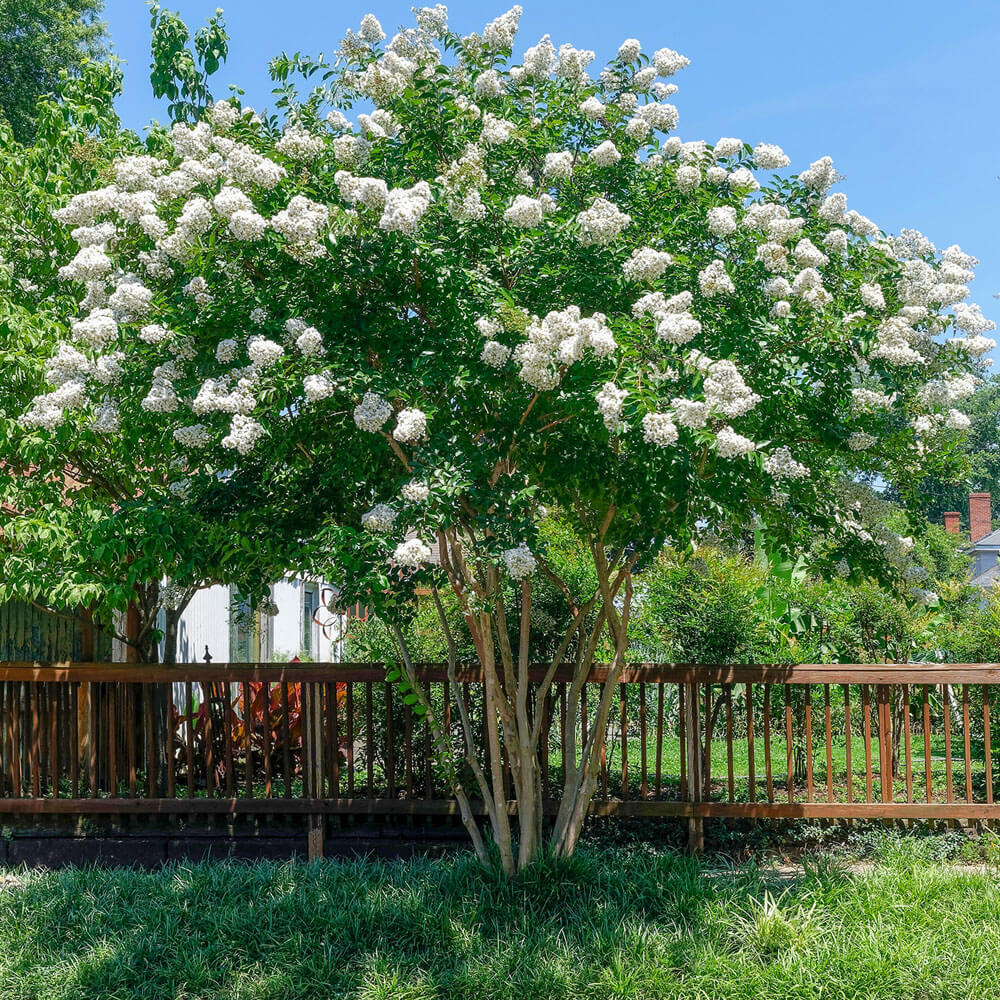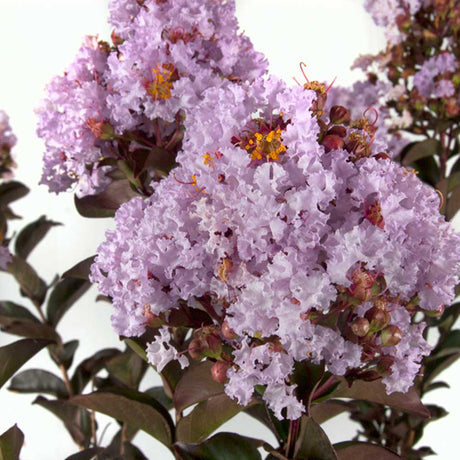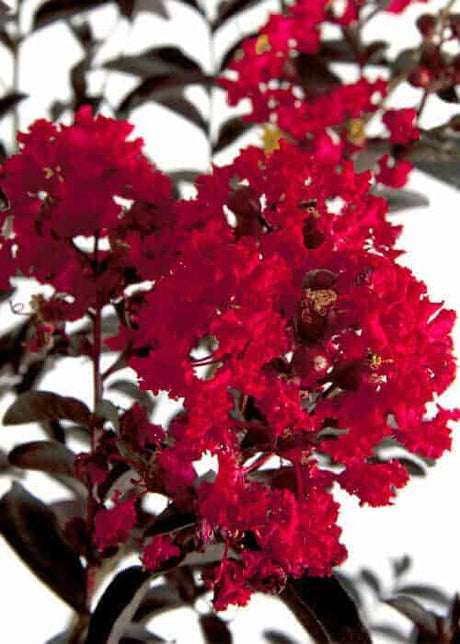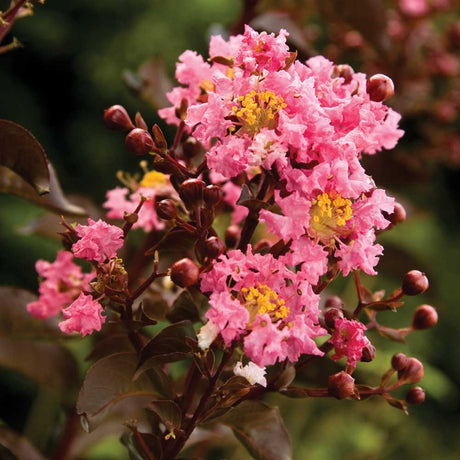Natchez Crepe Myrtle
Natchez Crepe Myrtle - 2.5 Gallon is backordered and will ship as soon as it is back in stock.
Couldn't load pickup availability
Description
Description
The Natchez Crapemyrtle characterized by its pristine white blossoms that gracefully blanket the plant during the summer months are reminiscent of Southern charm. The Natchez Crapemyrtle showcases a graceful, upright growth habit, ultimately reaching a mature height of 20 to 30 feet with a spread of 15 to 20 feet, making it an ideal choice for a show-stopping standalone specimen or as part of a picturesque hedge.
Whether used to frame an entrance, grace a garden bed, or as a stunning backdrop, the Natchez Crapemyrtle adds a touch of Southern elegance to any outdoor space.
During the spring and summer, the leaves are a bright green, providing a fresh and vibrant backdrop for the tree's stunning white blooms.
As the seasons shift to autumn, the foliage of the Natchez Crapemyrtle takes on a brilliant show of colors. The leaves typically change to a rich orange-red or sometimes a reddish-brown, adding a warm and inviting hue to the landscape. This seasonal transition in foliage color is one of the reasons why the Natchez Crapemyrtle is highly valued in gardens and landscapes, as it provides year-round visual interest.
Natchez Crapemyrtle Care
The Natchez Crapemyrtle has proven to remain both beautiful and resilient in USDA zones 7-9, capable of enduring temperatures ranging from 0° to 30° F.
This variety of Crape Myrtle thrives in almost any moist, yet well-drained soil. To ensure optimal blooming and robust growth, it needs a minimum of 6 hours of direct sunlight each day to provide optimal opportunity for growth.
Watering and Pruning Natchez Crapemyrtle Trees
Regular watering is essential, especially during the first growing season to establish a deep, extensive root system. Once established, they are relatively drought-tolerant, but it's important to maintain a consistent watering schedule during prolonged dry periods.
As for pruning, it should be done in late winter or early spring before new growth begins. Light pruning to shape the tree can also be performed, but it's crucial to avoid heavy pruning, as this can lead to excessive growth of shoots and reduce flowering. The goal is to maintain the natural form of the tree while promoting healthy growth and abundant blooms.
Mulching and Fertilizing Natchez Crapemyrtle
Apply a 2-3 inch layer of mulch around the base of the Crapemyrtle. Be sure to leave some space around the trunk to prevent moisture buildup, which can lead to rot or fungal diseases.
Use a balanced, slow-release fertilizer that's formulated for flowering trees and shrubs. A formula with a higher phosphorus content can encourage better blooming. Apply fertilizer in early spring as new growth appears. Follow the manufacturer’s instructions regarding the amount and frequency.
- Mulching helps retain soil moisture, regulate soil temperature, and suppress weed growth. It also adds an aesthetic finish to the garden bed and contributes to the overall health of the Crapemyrtle.
- Use organic mulch like shredded bark, pine straw, or compost. These materials break down over time, adding nutrients to the soil.
- Apply a 2-3 inch layer of mulch around the base of the Crapemyrtle. Be sure to leave some space around the trunk to prevent moisture buildup, which can lead to rot or fungal diseases.
- Refresh the mulch layer annually or as needed, typically in the spring or fall.
*The Natchez Crape myrtle is a deciduous/semi-evergreen plant that will go dormant during winter. Therefore, if you order this plant in the fall or winter, expect seasonal foliage decline (discoloration, spots, leaf drop) or the plant to arrive completely dormant.
Planting tips for Acid Loving Plants
Care & Use
Care & Use
Spacing Recommendations
Spacing Recommendations
-
Scientific Name
-
Hardiness Zone6, 7, 8, 9
-
Sun ExposureFull Sun to Part Shade
-
Evergreen or DeciduousDeciduous
-
FeaturesAttracts Birds / Butterflies, Fast Growth, Flowering, Drought Tolerant, Sun Loving
-
Feature ColorWhite
-
UsesAccent, Hedge, Specimen, Xeriscaping
-
Water NeedsMedium
-
Bloom SeasonSpring, Summer
Growing Zones : 6, 7, 8, and 9














